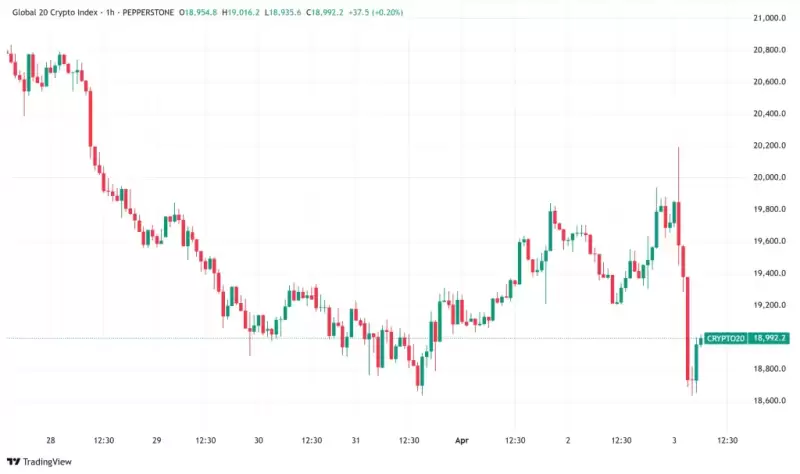 |
|
 |
|
 |
|
 |
|
 |
|
 |
|
 |
|
 |
|
 |
|
 |
|
 |
|
 |
|
 |
|
 |
|
 |
|

DePin crypto, short for Decentralized Physical Infrastructure Networks, is a fascinating concept in the world of blockchain. It’s all about using blockchain technology to manage and operate physical infrastructure. Think of it as a way to decentralize things like data storage, wireless networks, and even energy grids. By doing this, DePin projects aim to cut out the middleman, reduce costs, and make these systems more efficient. The real kicker? It opens up new revenue streams for both consumers and producers.
In recent years, DePin has gained significant traction. This growth is largely driven by the increasing need for decentralized solutions in our tech-driven world. As traditional systems struggle with inefficiencies and high costs, DePin offers a compelling alternative. Projects like Helium and Filecoin are leading the charge, demonstrating how DePin can revolutionize industries by providing more secure and cost-effective solutions. The market potential is huge, with many experts predicting that DePin could become a major player in the crypto space.
Several projects are making waves in the DePin ecosystem. Helium, for example, is building a decentralized wireless network that’s changing the way we think about connectivity. Filecoin is another big name, focusing on decentralized data storage, allowing users to rent out unused storage space. Then there’s the Theta Network, which is transforming digital media by decentralizing video streaming. These projects are not just ideas; they are actively reshaping their respective industries and showing the world the power of DePin.
As we look to the future, the potential for DePin to disrupt traditional infrastructure is immense. With its ability to cut costs and improve efficiency, it’s no wonder that investors and innovators are keeping a close eye on this space.
DePin, or Decentralized Physical Infrastructure Networks, is all about blending blockchain tech with real-world assets. This mix is creating some pretty cool use cases. For instance, think about how DePin projects are emerging as top performers in the cryptocurrency market. They’re changing how we handle data storage, media streaming, and even network connectivity. By using blockchain, these projects offer transparency and security that traditional systems just can’t match.
The crypto market is always shifting, but right now, DePin projects are catching a lot of attention. Why? Well, there’s a growing demand for decentralized solutions that are both efficient and scalable. People are looking for ways to cut costs and improve performance, and DePin seems to tick all those boxes.
Here’s a quick look at some trends:
People are spending more and more time online, and this is driving up the demand for data storage and network connectivity. DePin projects are stepping in to meet this demand by offering decentralized solutions that are more efficient and cost-effective than traditional options.
Web3 and the metaverse are also contributing to the growth of DePin. These new technologies require a lot of physical infrastructure to support them, and DePin projects are uniquely positioned to provide this infrastructure in a decentralized and scalable way.
As more industries adopt DePin solutions, we can expect to see even greater growth in this sector. From telecommunications to energy and entertainment, the possibilities for DePin are endless.
Experts are buzzing about DePin’s potential. Many believe that as more industries see the benefits of decentralization, DePin will become even more integral. Some predict that these projects could see massive growth, possibly even hitting that 100x mark everyone dreams about.
DePin’s journey is just beginning, and with the right moves, it could reshape entire industries. The integration of blockchain with physical assets isn’t just a trend—it’s a glimpse into the future of tech and infrastructure.
In short, DePin is on the rise, and it might just be the next big thing in crypto. Keep an eye on these projects—they’re set to make waves in the coming years.
Helium has been making waves in the crypto world, and for good reason. It’s not just about the tech; it’s about how it’s changing the game. Helium’s decentralized network lets devices connect wirelessly to the internet, without relying on traditional cellular networks. This approach is not only innovative but also cost-effective. Helium’s growth potential is massive, with more devices connecting to its network every day. As we look towards 2025, Helium is definitely a project to keep an eye on.
In a world where data is king, Filecoin offers a fresh perspective. Instead of relying on centralized data centers, Filecoin uses a decentralized network to store data. This not only increases security but also reduces costs. The idea is simple: people rent out their unused storage space in exchange for Filecoin tokens. This creates a win-win situation for both data providers and users. With the increasing demand for secure data storage, Filecoin is poised to play a significant role in the future of digital storage.
Theta Network is another exciting DePin project that’s changing how we consume media
免责声明:info@kdj.com
所提供的信息并非交易建议。根据本文提供的信息进行的任何投资,kdj.com不承担任何责任。加密货币具有高波动性,强烈建议您深入研究后,谨慎投资!
如您认为本网站上使用的内容侵犯了您的版权,请立即联系我们(info@kdj.com),我们将及时删除。
-

- PI网络面临其投资者社区的反对,因为人们对透明度增长的担忧
- 2025-04-03 10:50:12
- PI网络目前正面临其投资者社区的大量评估,因为人们对透明度增长的担忧。
-

-

-

- Iotex将于4月3日在华盛顿特区领导迪瓦尔教育日
- 2025-04-03 10:45:12
- 代表将与国会议员会面,以展示分散的物理基础设施网络(DEPIN)如何将加密货币整合到现实世界中
-

- 历史数据表明,比特币的价格通常在4月平均增加12.98%。
- 2025-04-03 10:40:12
- 结果,加密货币社区经常将4月视为比特币特别有利和令人印象深刻的月份 - 有些人幽默地将其称为“ Upril”。
-

- Holo将在YouTube上托管直播
- 2025-04-03 10:40:12
- Holo将于4月10日在UTC在YouTube举办直播。该会议将提供有关最新进度和未来计划的更新。
-

- LivePeer将于4月7日举行社区电话,重点介绍其链财政部的治理,资金和战略方向。
- 2025-04-03 10:35:13
- LivePeer是一项分散的协议,利用以太坊区块链使视频处理领域民主化。
-

-

- PI网络未能列入二手列表
- 2025-04-03 10:30:12
- 当Binance列出倡议的投票开始时,该交易所已第二次转移了PI网络。




























































